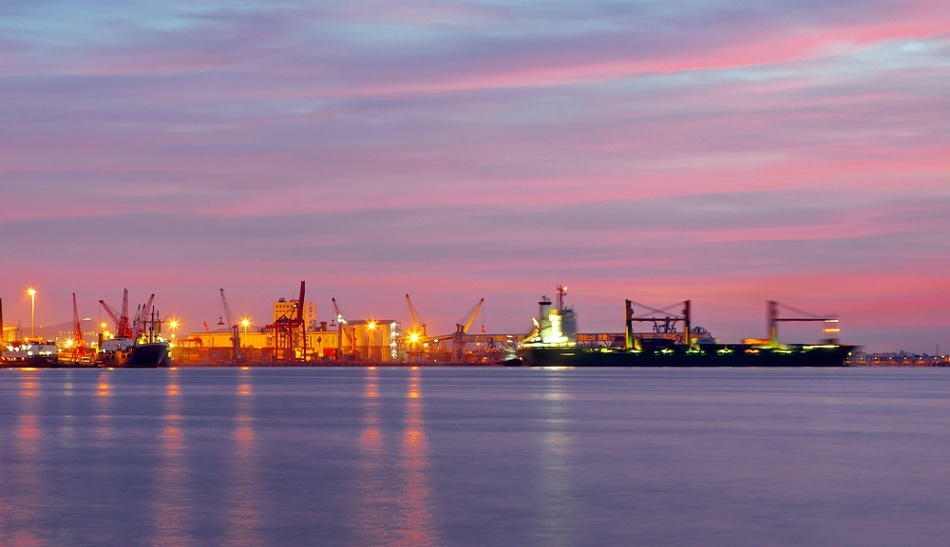Nov 14 2016
 muratart/Shutterstock.com
muratart/Shutterstock.com
A novel marine pumped storage system has been created by a team of researchers at the Fraunhofer Institute for Wind Energy and Energy System Technology (IWES). The system is based on the invention by Professor Horst Schmidt-Böcking from Goethe University Frankfurt and his colleague Dr. Gerhard Luther from Saarland University.
How can the huge quantities of electricity produced via offshore wind power be temporarily stored on site? There was no answer to this question, until now. The StEnSea project (Stored Energy in the Sea) after many years of research work has now begun the test phase. The project is funded by the Federal Ministry for Economic Affairs and Energy.
In the project’s framework, IWES, the Fraunhofer institute in Kassel focused on energy system technology, and is currently progressing to application level the “marine egg” created by two physics professors at Goethe University Frankfurt and Saarland University in Saarbrücken.
A model built to the scale of 1:10 with a diameter of roughly three meters was transported to the ferry terminal in Constance on 8 November 2016 and lowered on 9 November 2016 to a depth of 100 m, about 200 m from the shore in Überlingen. It will be tested for four weeks.
Pumped storage power plants installed on the seabed can use the high water pressure in very deep water to store electrical energy with the aid of hollow spheres.
Horst Schmidt-Böcking, Emeritus Professor, Goethe University Frankfurt
Water is pumped out of the sphere using an electric pump to store energy. To produce power, water flows via a turbine into the empty sphere and generates electrical energy by means of a generator.
Along with his colleague Dr. Gerhard Luther from Saarland University, Professor Schmidt-Böcking filed a patent for their theory for offshore energy storage, just a couple of days prior to the Fukushima disaster in 2011.
The two inventors remember: “The rapid practical realization of our idea is actually thanks to a newspaper article in the FAZ. Georg Küffner, the technology editor, presented our idea for energy storage to the general public - as chance would have it on the 1st of April 2011. Lots of readers doubtlessly thought at first that it was an April Fool hoax, but experts at Hochtief Solutions AG in Frankfurt immediately recognized the idea’s hidden possibilities. Within a couple of weeks we were able to set up a consortium for an initial feasibility study with Hochtief’s specialists for concrete structures and the experts in marine power and energy storage at IWES in Kassel, the Fraunhofer Institute for Wind Energy and Energy System Technology”, recall Schmidt-Böcking and Luther.
The Federal Ministry for Economic Affairs and Energy subsequently funded the StEnSea project once the concept’s viability had been proven. Now the novel pumped storage system could be further developed and analyzed on a model scale. Currently, it is starting the test phase. Project Manager Matthias Puchta from Fraunhofer IWES recapitulates the project’s successes to date.
On the basis of our preliminary study, we carried out a detailed systems analysis with a design, construction and logistics concept for the pressure tank, developed a turbine-pump unit, examined how to connect the sphere to the electricity grid, calculated profitability and drew up a roadmap for the system’s technical implementation. The four-week model trials on the scale of 1:10 are starting now in Lake Constance. We will run various tests to check all the details concerning design, installation, configuration of the drivetrain and the electrical system, operation and control, condition monitoring as well as dynamic modeling and simulation of the system as a whole.
Matthias Puchta, Project Manager
IWES Head of Division Jochen Bard, who has been involved in marine power research for several years at both international and national level, explains: “With the results from the model trials, we want first of all to look more closely at suitable sites for a demonstration project in Europe. We are aiming at a sphere diameter of 30 meters for the demonstration-scale system. At the moment that’s the most practical size in terms of engineering. What’s already certain is that the system can only be used economically in the sea at depths of about 600-800 meters upwards. Storage capacity with the same volume increases linearly with the depth of the water and at 700 meters is about 20 megawatt hours (MWh) for a 30 m sphere.”
He adds: “There is great potential for the use of marine pumped storage systems in coastal areas, in particular near the coast in highly populated regions too, for example in Norway (Norwegian Trench). But Spain, the USA and Japan also have great potential. With a storage capacity of 20 MWh per sphere and standard technology available today, we can envisage a total electricity storage capacity of 893.000 MWh worldwide. This would make an important and inexpensive contribution to compensating fluctuations in electricity generation from wind and solar power.”